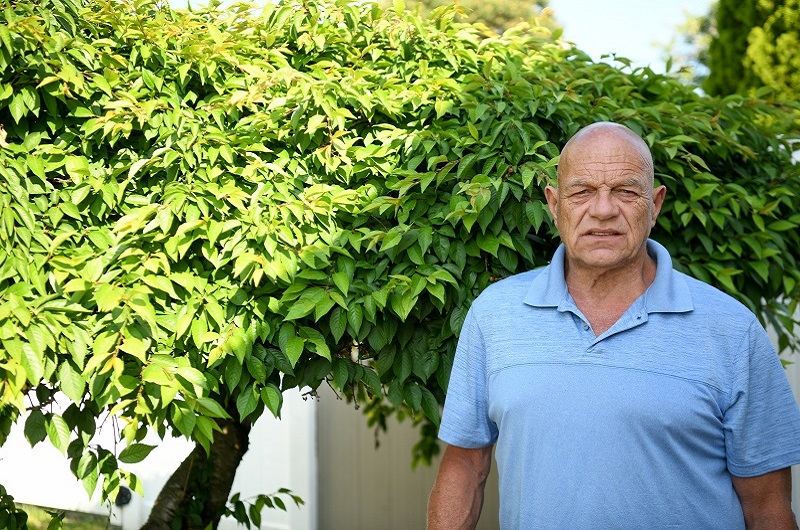Surgeon Repairs Four Hernias Simultaneously Using Robotic Surgical Technology

May 25, 2023
When James Roe, 61, of Brick, New Jersey, noticed a painful bulge in his belly button, he knew he needed to see a doctor.
A CT scan showed that James actually had four hernias — one in his back at the site of an incision from previous spine surgery, one in his belly button, and one in each groin.
A hernia occurs when an internal organ or fatty tissue pokes through an opening in the muscle wall that is designed to hold it in. In James’s case, his CT scan showed that he had gaps in his abdominal wall in all four locations. His colon was protruding through the hernia in his back, and fatty tissue was protruding through the other three hernias.
Because hernias don’t go away on their own, James would need surgery to return his organs to their proper places and repair the openings in his abdominal wall.
James went to see Seth Kipnis, M.D., director of Bariatric Surgery and director of Robotics at Jersey Shore University Medical Center.
“To treat James’s four hernias with open surgery or traditional laparoscopy would have required at least two operations — and possibly more,” says Dr. Kipnis. “And the hernia in James’s back would have required an incision through his old scar from his previous surgery, which would have been painful.”
Another Treatment Option
Fortunately, James had another treatment option: robotic surgery.
“Using robotic surgery, I could repair all four hernias at the same time, even though they were in completely different locations,” says Dr. Kipnis. “And, we could do it all efficiently, without having to reposition the patient during surgery.”
The robotic surgery system has four robotic arms. One arm holds a video camera and the other three arms hold small surgical instruments. The surgical instruments and camera are inserted into the patient’s body through half-inch incisions, reducing healing time, pain, tissue trauma, blood loss and the risk of complications.
From a specialized surgical console that projects an image of the surgical area transmitted by the video camera, the surgeon can precisely control the robot’s movements with foot pedals and hand controls — allowing for increased surgical precision with outstanding cosmetic and surgical results.
“For James’s surgery, I inserted the instruments and camera through four incisions into the abdominal wall — including one in his belly button,” says Dr. Kipnis. “I was able to repair all four hernias in under two hours, and James was discharged the same day.”
Dr. Kipnis adds that surgeons now perform most hernia repairs robotically. For James, robotic surgery allowed him to make a full recovery in 2-4 weeks, instead of the 6-8 weeks that would have been expected after traditional surgery.
Next Steps and Resources:
- Learn more about robotic surgery at Hackensack Meridian Health.






